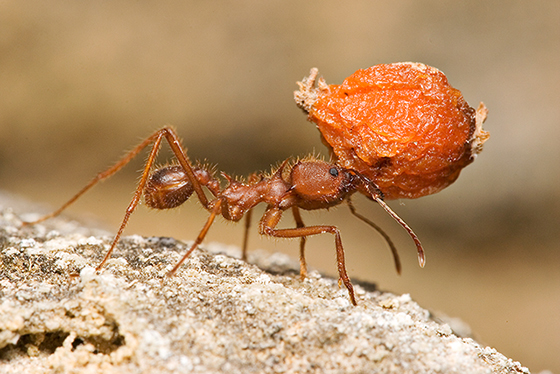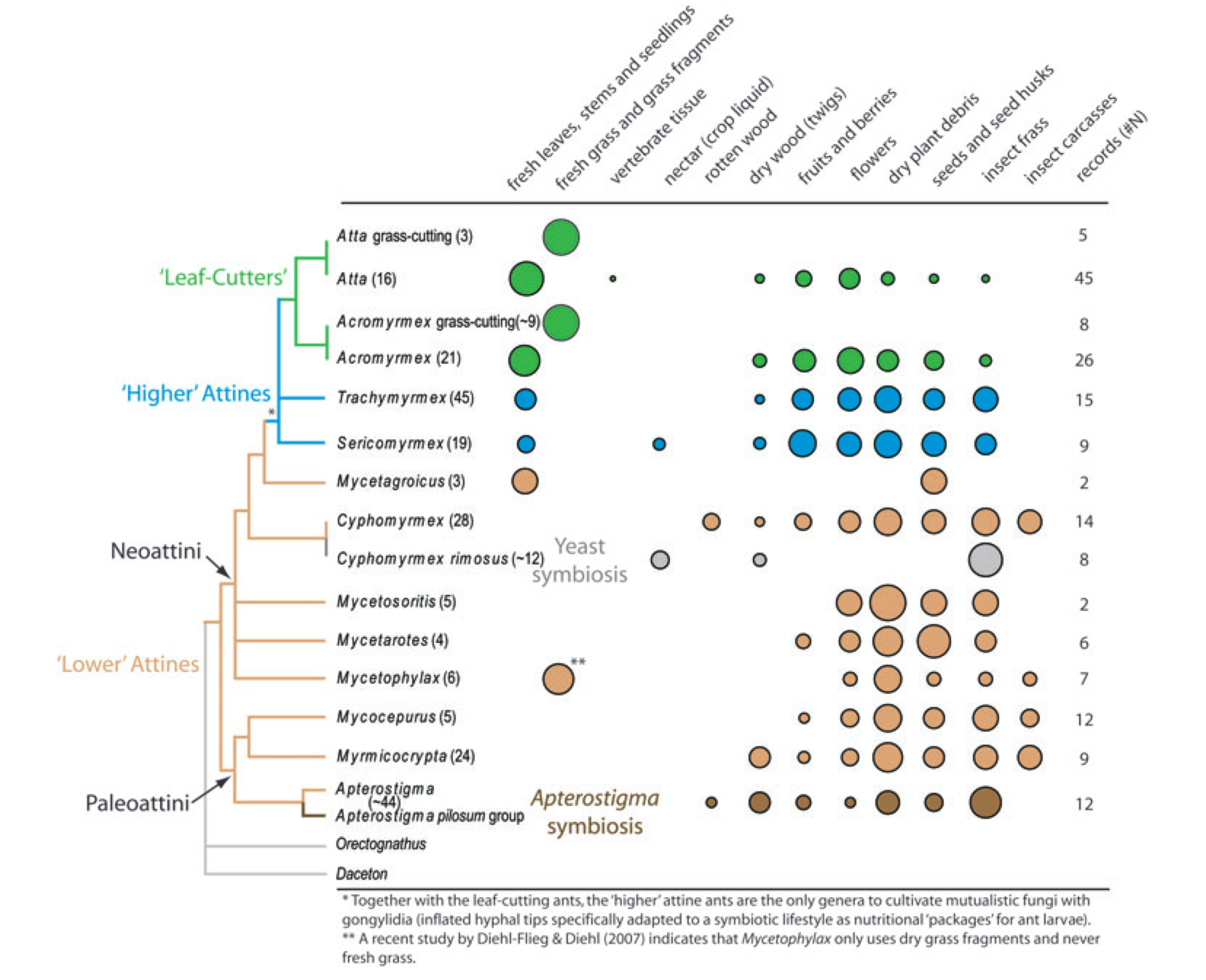Leafcutter Ants, the Fungal Farmers
Biology 342 Fall 2014
Caleb Kalisher
Phylogeny
Phylogeny looks at the evolutionary history of a behavior. Fungus-cultivating behaviors within insects have independently evolved at least nine separate times. The behaviors can be seen within certain species of termite, and beetles, as well as ants (Licht et al. 2010).
 {1}
{1}
Species Specific Substrate Selection
The difference between the various independent evolutions of fungus-farming behaviors within ants is frequently traced back to the various coevolution between the ants and the type of fungus they cultivate. Different types of fungi may require different types of substrates. These differences of fungi nutrient needs has resulted in a divergence of foraging behaviors between the ant species as they seek out different substrate sources to grow their fungal gardens (Licht et al .2010) So, while their are many different types of fungal farming ants, the type of substrate that the different ants use to cultivate their fungus has resulted in different species of ants, with leafcutters being only a portion. As can be seen in the bottom chart made by Licht et al., It is predominantly the atta and acromymex ants who act as leafcutters, compared to the "Lower Attine" ants who predominantly gather dry plant matter and insect debris for substrates.
